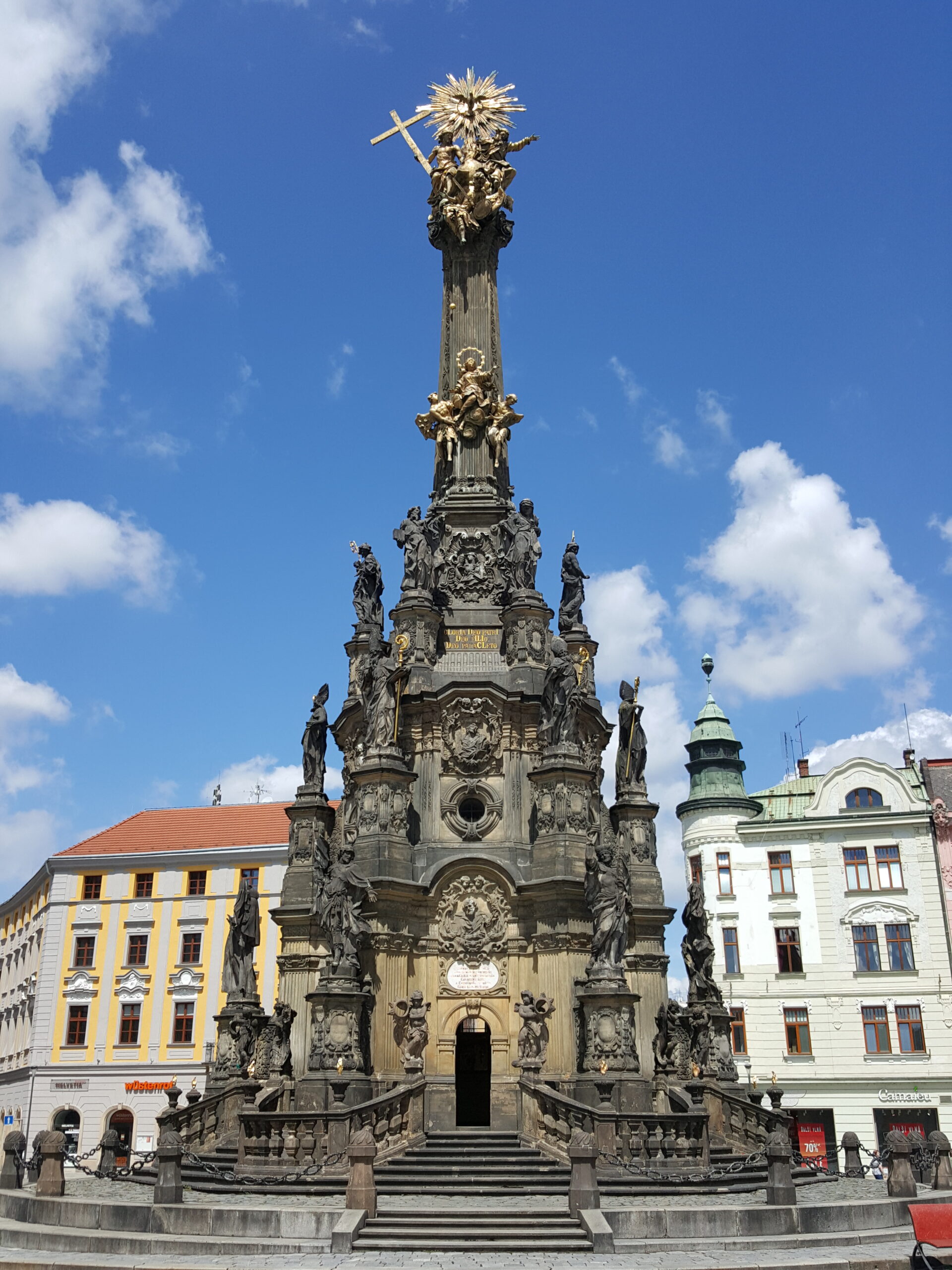The plague – The Holy Trinity Column, Olomouc
Fact of the Czech figure „Pandemics in Czech lands”
Part of the „Pandemics” topic
The plague is sometimes inaccurately called the Black Death. The name dates back to the 14th century, when a major bubonic plague pandemic struck Europe and killed millions of people. The Black Death also reached the Czech lands, although initially its impact was relatively limited. However, it subsequently returned on numerous occasions. Over the following four centuries, the plague reoccurred with varying degrees of intensity. During the most severe outbreaks, hundreds of thousands of people died.
People understood the recurring epidemics as God’s punishment for their deeds. This led to the development of penitential groups (e.g. Flagellants) or encouraged criticism of the Church by the Hussites (14th – 15th centuries). People also took refuge under the protection of the heavenly powers. The intercession of saints, known as protectors against the plague, was supposed to have great power. It is their statues that adorn the plague column in Olomouc, dedicated to the Immaculate Virgin Mary symbolically defeating the evil personified by the dragon. St. Roch, St. Sebastian and St. Charles of Boromea, who himself helped plague victims despite his frail health, stand around her. The last major epidemic hit the Czech lands after 1711. Its influence contributed to the increased interest in hygiene and the building of the first sewers or the construction of the Holy Trinity Column in Olomouc as a thank you for ending the disease.





